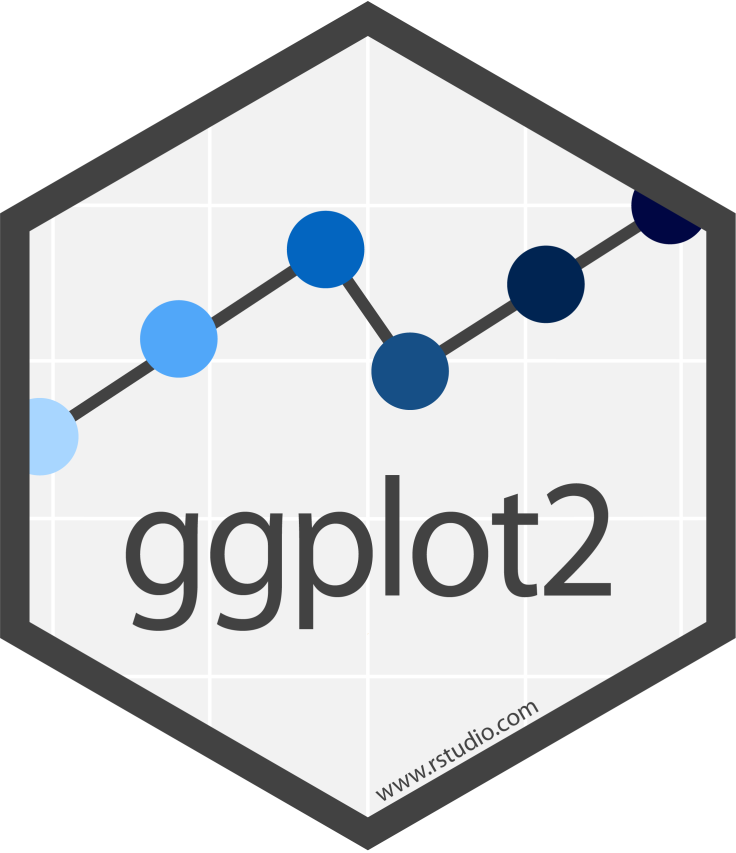Introduction to the R programming language
The R programming language

R is a language and environment for statistical computing and graphics.
https://posit.cloud provides an online IDE
Interacting with the console

RMarkdown and quarto
RMarkdown is a plain text format (and accompanying tools) that allows you to intersperse text, code, and outputs
Quarto is an open-source scientific and technical publishing system that allows to render notebooks in a variety of formats
The RMarkdown pipeline


Data types
R has five basic data types:
Names
In R, everything can be given a name
x # this is a valid name
descriptive_name # descriptive names are preferable
# - note the underscore separating the words
# - spaces are not allowed
also.valid # This is also a valid name, using an older and maybe
# confusing naming scheme. If you come from Java/C++/Python/Javascript....
# the . in the middle of the name is *not* the member access operatorThese names (and others) are not allowed
Some names are best avoided, because they are library functions that you would overwrite
Binding things to names
Using the “arrow” syntax you can assign names to things
Later on, you can retrieve the values by simply referencing the name
Using R as a calculator
Arithmetic
Comparisons
Logical
Boolean values and comparisons
Using R as a calculator
What does the following comparison return (sqrt gives the square root)?
\[ (\sqrt{2})^2 = 2 \]
[1] FALSEMissing values
The NA keyword represents a missing value.
[1] NA[1] NA[1] NAMissing values
To check if a value is NA you use the is.na function
Other special values
What is the result of this operation?
[1] NaNThe NaN value (Not a Number): the result cannot be represented by a computer.
NA vs NaN
Beware: in R the values NA and NaN refer to distinct concepts. This is in contrast with Python, where NaN is often used also to indicate missing values.
Other special values
What about this operation?
[1] InfThe Inf value is used to represent infinity, and propagates in calculations
[1] NaNVectors
Atomic vectors are homogeneous indexed collections of values of the same basic data type
Vectors
You can ask for the type of a vector using typeof
Vectors
You can ask for the length of a vector using length
What about scalars?
What does this return?
[1] 1There are no scalar values, but vectors of length 1!
Vectors
The c function combines its argments
[1] 1 3 5 7 2 4 6 8Using c multiple times does not nest vectors
Vectors
[1] "1" "hello" "0.45" Coercion
Recycling
[1] 2 3 4R coerces the length of vectors, if needed.
Remember that 1 is a vector of length one. By coercion, in the operation above, it is replaced with c(1, 1, 1) by recycling its value.
[1] 2 5 4Operations on logical vectors
There are distinct operators for element-wise operators on logical vectors:
which is different from
Operations on logical vectors
How can you check if all the values are FALSE?
Naming vectors
Elements of vectors can be named, which will be useful for indexing into the vector
Notice that you need to enclose a name in quotes only if it contains spaces.
Subsetting vectors
You can index into vectors using integers indexes.
Beware: indexing starts from 1!
So what about this?
[1] NASubsetting vectors

Subsetting vectors
What does the code below gives?
[1] "values" "these" [1] "these" "these" "some" "some" "these"Subsetting vectors
What about
[1] "these" "some" "values"Negative indices remove values from a vector!
Subsetting vectors
You can use boolean vectors to retain only the entries corresponding to TRUE
Subsetting and naming
Is the following naming valid?
Subsetting and naming
Is the following naming valid?
This is not valid, since it makes subsetting ambiguous.
Heterogeneous collections
A list allows to store elements of different type in the same collection, without coercion.
Named, nested lists
Looking at the structure of nested lists
With the str function you can look at the structure of nested lists.
Control flow: if
Control flow: for loops
We will use the following data as examples.
List of 4
$ a: num [1:10] -1.207 0.277 1.084 -2.346 0.429 ...
$ b: num [1:10] 0.317 0.303 0.159 0.04 0.219 ...
$ c: num [1:10] 0.877 0.0146 1.8351 0.5193 1.9963 ...
$ d: num [1:10] -159.354 -1.608 21.193 0.963 -0.907 ...Control flow: for loops
We want to compute the mean of each of a, b, c and d in loop_data. A straighforward approach would be
data_means <- list(
a = mean(loop_data$a),
b = mean(loop_data$b),
c = mean(loop_data$c),
d = mean(loop_data$d)
)
str(data_means)List of 4
$ a: num -0.383
$ b: num 0.417
$ c: num 0.855
$ d: num -20.9What are the issues with this approach?
- Much repetition
- We must modify the code if we ever extend the list
Control flow: for loops
We can do better with a for loop
data_means <- list()
for (i in 1:length(loop_data)) {
data_means <- c(
data_means,
mean(loop_data[[i]])
)
}
str(data_means)List of 4
$ : num -0.383
$ : num 0.417
$ : num 0.855
$ : num -20.9Did we lose something?
Control flow: for loops
Functions
Whenever you find yourself copy-pasting the code, create a function instead!
- The name of the function serves to describe its purpose
- Maintenance is easier: you only need to update code in one place
- You don’t make silly copy-paste errors
Functions: anatomy
Function call
Function definition
Functions: an example
Consider the following data
List of 4
$ a: num [1:5] 0.00986 0.67827 1.02956 -1.72953 -2.20435
$ b: num [1:5] -1.319 1.453 -37.231 0.164 -4.862
$ c: num [1:5] 0.1215 0.8928 0.0146 0.7831 0.09
$ d: num [1:5] 0.0384 1.2302 2.2003 0.9757 0.337we want to rescale all the values so that they lie in the range 0 to 1.
Functions: an example
Let’s first see how to do it on my_list$a:
Functions: an example
Now, instead of copying and pasting the code for all the entries in my_list, we define a function rescale01
and then we can invoke it, maybe in a loop
Functions: variable number of arguments
You can write functions that accept a variable number of arguments using the ... syntax:

Libraries
Functions are the basic unit of code reuse
Libraries (also called packages) group together functions with related functionality
https://cran.r-project.org
Installing libraries
Just use the command
The tidyverse
Using libraries
Using libraries
The second option is more convenient, but some names may mask names already in scope
Attaching package: `dplyr`
The following objects are masked
from `package:stats`:
filter, lag
The following objects are masked
from `package:base`:
intersect, setdiff, setequal, unionThe Tidyverse libraries
The tidyverse is an opinionated collection of R packages designed for data science. All packages share an underlying design philosophy, grammar, and data structures.

The main library we will deal with.
Declarative graphics with a well-defined grammar.
The main reason we use Rpython.
The tabular data representation we will mostly use.
A modern iteration on the data frame concept.

Data manipulation library.
Covers most of our preprocessing needs.

Reads a variety of file formats in a convenient way.
Handles corner cases and encodings for you.

